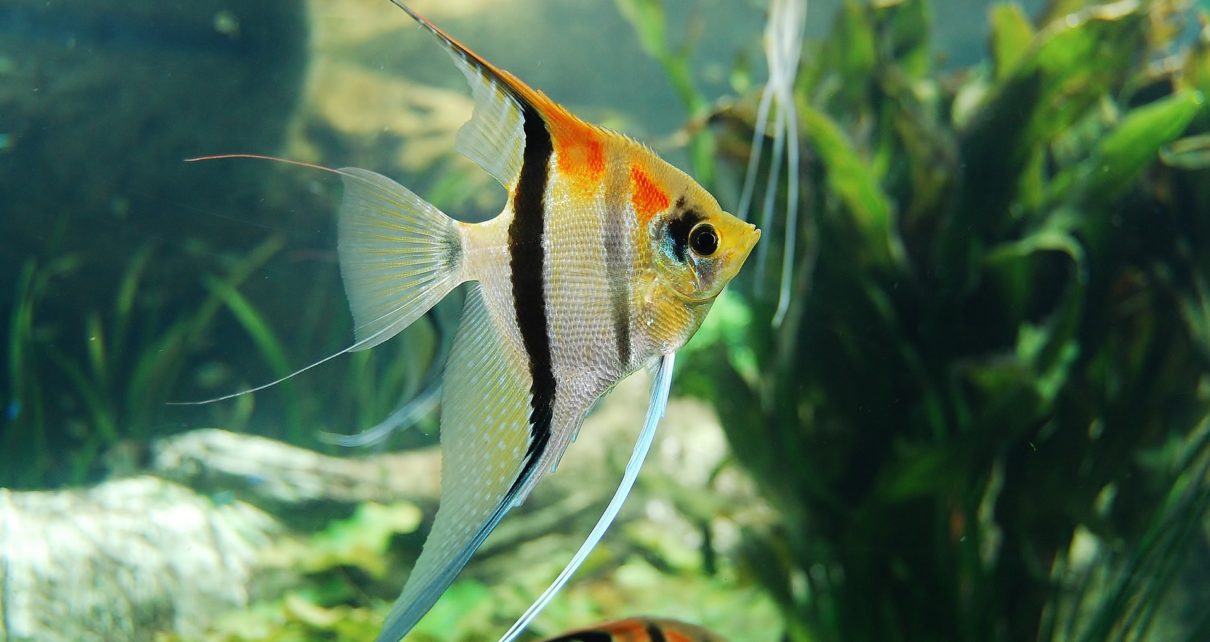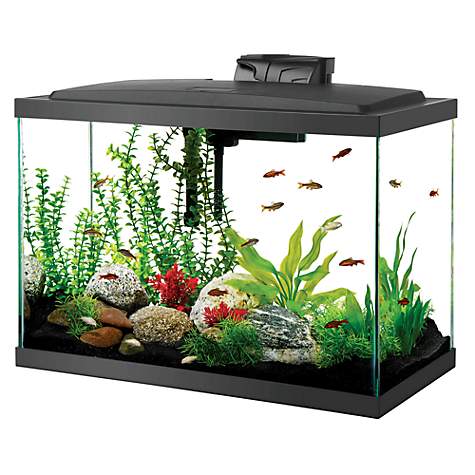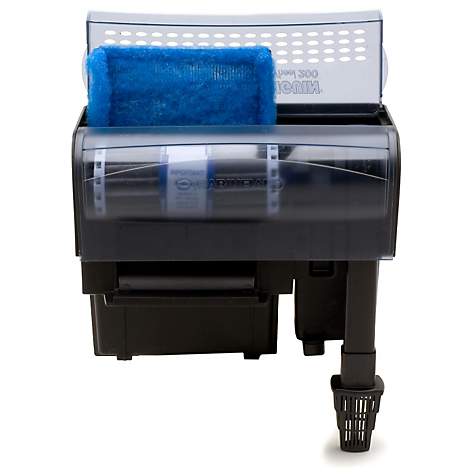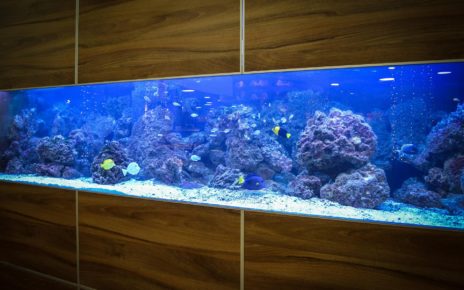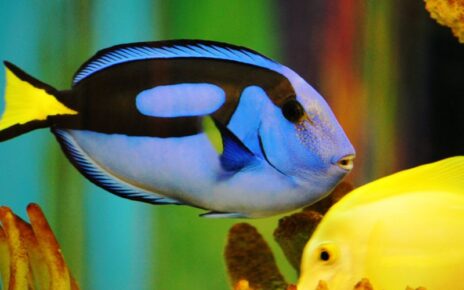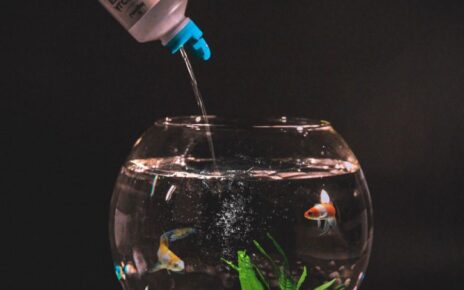What Size Fish Tank Filter Do I Need
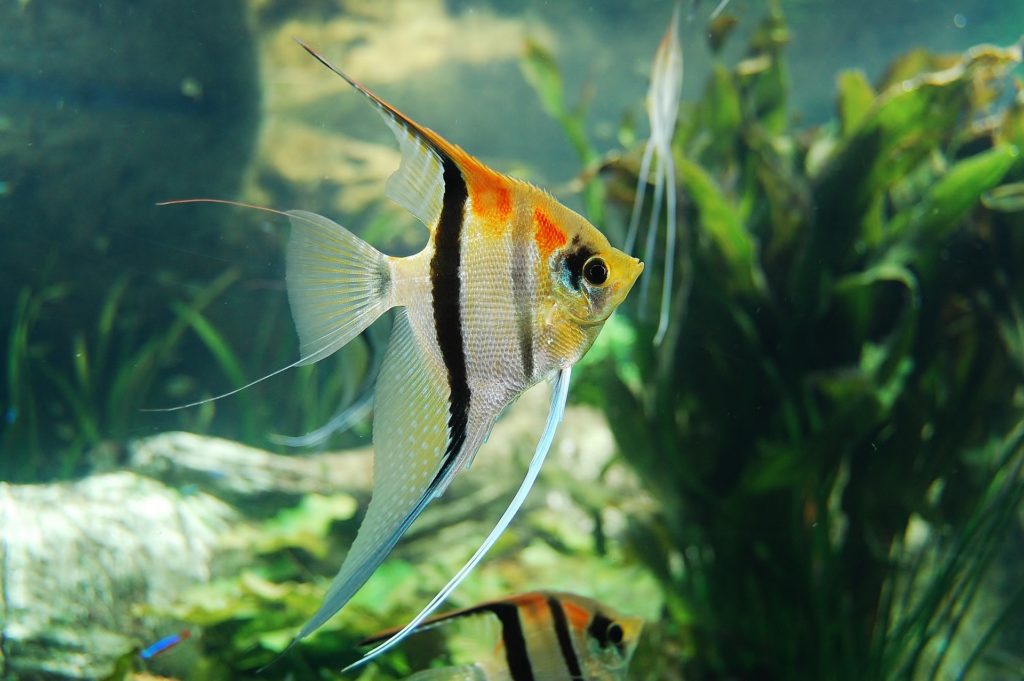
In order to keep your aquariums water as clean as possible, it is recommended that you have a filter that is powerful enough to turn the tanks water over at least 4 times and hour. That means if you have a 20 gallon tank you will need a filter that has a minimum flow rate of 80 GPH (gallons per hour). If you want to know what size filter you need for your tank try out the aquarium filter size calculator located above to get an exact answer.
Turning a tanks water over four times and hour is a good rule of thumb, but just like most rules it won’t work in all situations. Some filters will work more efficiently with a higher flow rate, while other filters can operate under low flow conditions.
The inhabitants of an aquarium can also dictate how large of a filter you will need. Some fish prefer calm water with little to no current, while others can handle very turbulent waters. Small fish especially are more likely to get sucked up into a powerful filter. In order to prevent fish from being sucked up into a filter you will either need to get a lower flow filter, or find a filter that has a guard on its water intake.
Planted Aquarium Filter Size
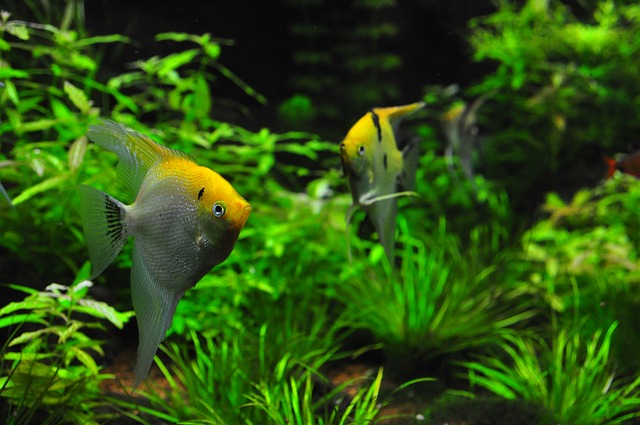
Plants just like fish have their own special filter size requirements. In order for plants to thrive they need adequate dissolved CO2 in the water. Plants need this CO2 to breathe, and also for a wide range of biochemical processes.
In order to keep CO2 from out-gassing from the water you have to minimize surface agitation as much as possible. That means you have to use a lower flow filter in order to limit turbulence and minimize any splashing on the waters surface.
Plants will also be less likely to be uprooted if you use a filter that has a lower flow rate. This is especially important with shallow rooted species of plants that have a tenuous grip on the aquariums substrate.
Reef Aquarium Filter Size

Reef tanks actually need a higher flow filter than most other aquariums. One reason for this is that saltwater fish tend to have a lower tolerance for poor water conditions. A reef tank will also most likely have protein skimmers, sumps and refugiums as part of their filtration system. All of these components will add more load to a filter, which means you will need a more powerful filter to overcome the added resistance of these additional stages.
Corals and other filter feeders also require a filter with a higher flow rate. The reason for this is that they have to get all of their food from the water that passes over them. If the flow rate is to low they can be starved of nutrients, which can lead to poor health or death in a worst case scenario. The best way to avoid this is to use a filter that is powerful enough to create a current throughout the whole body of water.
Can You Over Filter a Fish Tank
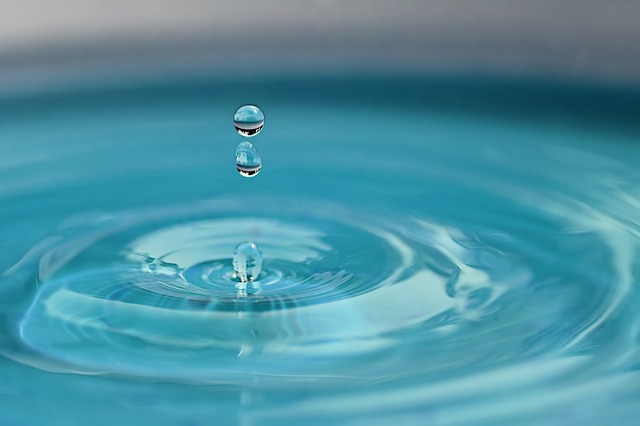
For the most part you don’t have to worry about over filtering a fish tank. Of course you still have to use some common sense when choosing the right filter for your aquarium. In most cases it is safe to use a filter that is rated for a tank that is larger than yours without running into problems.
In some cases a larger filter can be beneficial if your tank has a high bio-load or if the water has clarity issues. The tank size rating on most filters should be taken more as a suggestion and not as a hard limit.
One situation where over filtration might be an issue is if you have a planted aquarium. The excessive water movement can cause CO2 loss which can be detrimental to your plants health.
Another situation where over-filtration might cause a problem is in a breeder tank. In a tank with small fry you should avoid using powerful filters that can suck up and kill any of the tiny fish. Small fry also tend to have a hard time swimming in a strong current, for that reason most people avoid using strong filters in breeder tanks and use sponge filters instead.
As long as you don’t go overboard and put a filter rated for a 240 gallon tank onto a 20 gallon aquarium you should be fine. As with all things use your best judgment and assess your needs before selecting the filter that best suits your aquarium.
What Size Filter for a 20 Gallon Aquarium
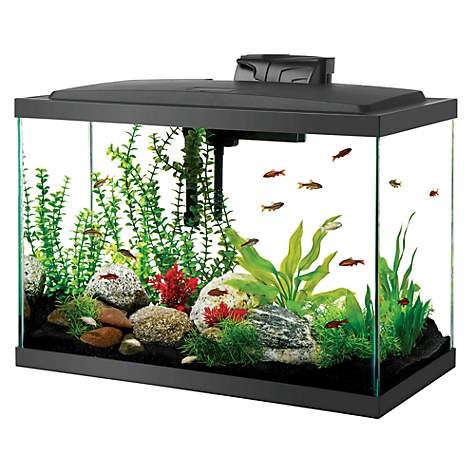
| Regular | Planted | Reef |
| 80-130 GPH | 64-80 GPH | 104-130 GPH |
The optimal filter size for a 20 gallon aquarium is one with a flow rate of 80-100 GPH (gallons per hour). For a 20 gallon planted tank a filter with a flow rate of 64-80 GPH will be sufficient. A 20 gallon reef tank will require a filter with a flow rate of 100-130 GPH to make sure the water is fully cycled.
What Size Filter for a 29 Gallon Tank
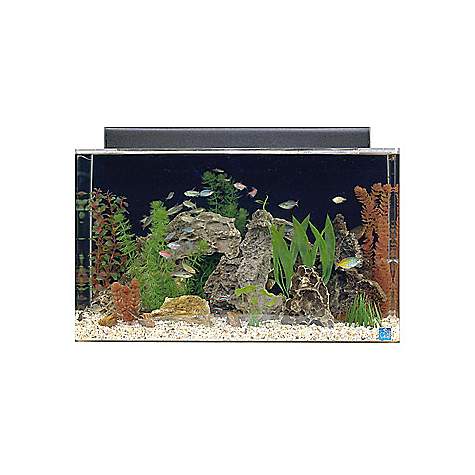
| Regular | Planted | Reef |
| 115-145 GPH | 95-115 GPH | 150-190 GPH |
The right size filter for a 29 gallon tank is one with a flow rate of 115-145 GPH (gallons per hour). A planted 29 gallon tank will need a filter that has a flow rate of 95-115 GPH. While a 29 gallon reef tank will need a filter with a flow rate of 150-190 GPH.
What Size Filter for a 30 Gallon Fish Tank
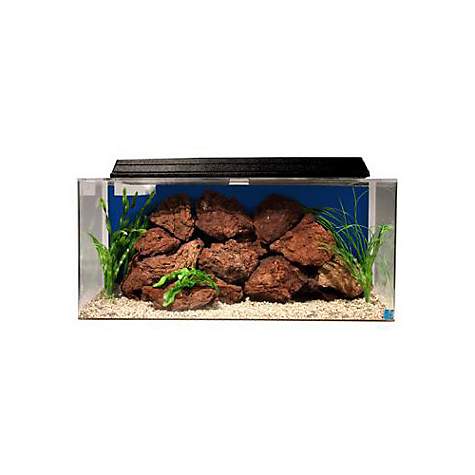
| Regular | Planted | Reef |
| 120-150 GPH | 95-120 GPH | 150-195 GPH |
A good size filter for a 30 gallon fish tank is one with a flow rate of 120-150 GPH (gallons per hour). If your 30 gallon tank is planted you will need a filter with a flow rate of 95-120 GPH. A 30 gallon reef tank on the other hand will need a filter that has a flow rate of 150-195 GPH.
Check Out: Best Canister Filter for a 30 Gallon Tank
What Size Filter for a 55 Gallon Fish Tank
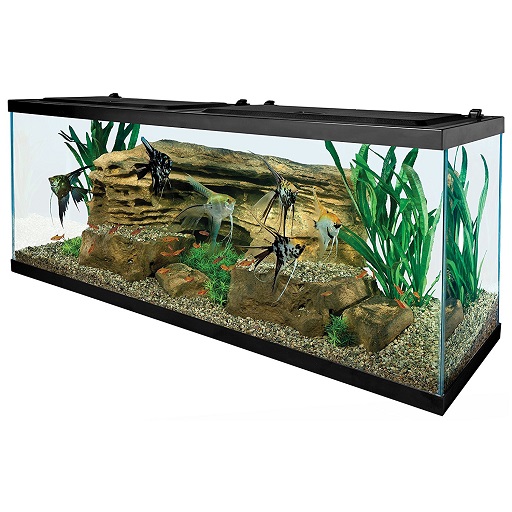
| Regular | Planted | Reef |
| 220-275 GPH | 175-220 GPH | 285-360 GPH |
The best size filter for a 55 gallon fish tank is a filter that has a flow rate of 220-275 GPH (gallons per hour). A 55 gallon planted tank will need a filter with a flow rate of 175-220 GPH. A 55 gallon reef tank will need a filter with a flow rate of 285-360 GPH in order to effectively turn over the water.
What Size Filter for a 75 Gallon Aquarium
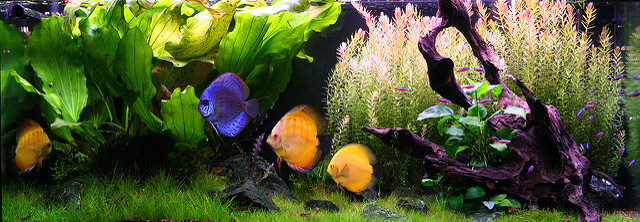
| Regular | Planted | Reef |
| 300-375 GPH | 240-300 GPH | 390-490 GPH |
When selecting the proper size filter for a 75 gallon aquarium you will need to choose one that has a flow rate of 300-375 GPH (gallons per hour). A planted 75 gallon aquarium will only need a filter with a flow rate of 240-300 GPH. A 75 gallon reef aquarium on the other hand will require a filter with a flow rate of 390-490 GPH to completely circulate the water.
What’s the Best Filter for a Fish Tank
Powerfilter
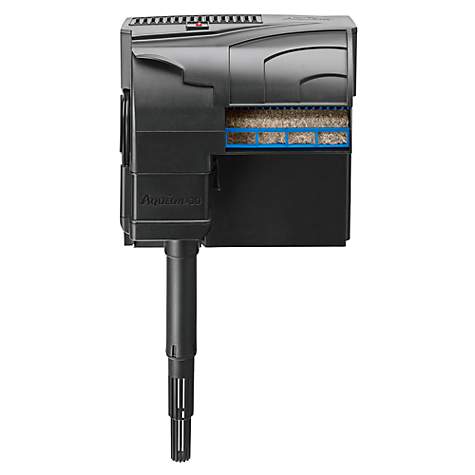
Powerfilters are one of the most popular filters on the market. They are usually the first filter someone gets with their first aquarium. Powerfilters have the benefit of being both easy to install and maintain. They also come with everything you need in one convenient package.
The benefits of choosing a powerfilter is that they are readily available. Filter replacement cartridges can also easily be found at any pet store. They are also very easy to maintain since changing the filter pads is simple since the filter is easily accessible.
While powerfilters are great and will work well in most situations they do have some downsides. The first one is that when you do a filter change you will lose a large portion of the bacteria that are responsible for bio-filtration. This is due to the fact that the filter pads are usually all in one solutions. While there are some powerfilters that try to avoid this with separate bio-filtration cartridges, it’s still somewhat unavoidable.
Powerfilters also agitate the waters surface more than most other types of filters. This can be a big problem in a planted aquarium since it can cause CO2 to escape from the water. All of the splashing can also be a source of noise which can be a problem for some people.
Canister Filter
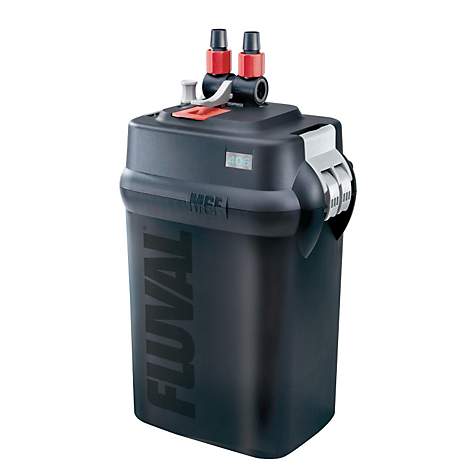
Canister filters are usually used by people that already have some experience in the fish keeping hobby. They are also more suited for use on larger tanks, so you don’t commonly see them used on small aquariums.
Canister filters are very efficient at mechanical filtration due to the fact that they are a totally closed system. Thanks to their closed nature all the water is pushed through the filter media at high pressure. This enables the filter to better polish the water, and it avoids filter bypass problems that are common in other filters.
A canister filter can also be located under a tank which can be more aesthetically pleasing. They can also be used in conjunction with other filtration methods quite easily since all you have to do is hook them up to an aquariums preexisting plumbing.
The downsides to a canister filter is that they are harder to maintain and that they provide limited biological filtration. The maintenance issue is related to the fact that it can be a lot more work to change the filter media. While the limited biological filtration is due to the fact that a canister filter is a closed system which means the bacteria in the filter will have limited access to oxygen.
Sump Filter
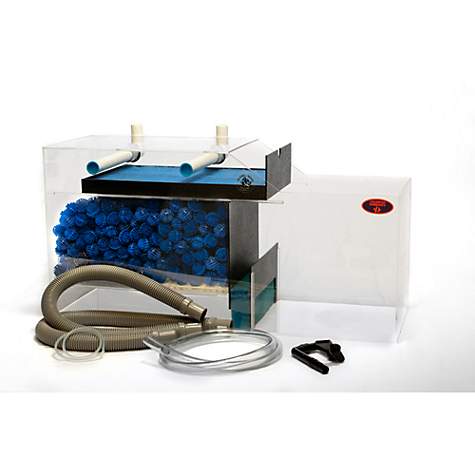
Sump filters are usually used on reef tanks and larger freshwater aquariums. They are very popular amongst experienced hobbyists and professional fish keepers. They are most commonly used in conjunction with other filtration methods like refugiums, protein skimmers, and canister filters.
The part of the filtration process where sump filters really stand out is biological filtration. This is due to the fact that they have a high surface area for the bacteria to colonize. They are also open to the air so they provide the most oxygen to the bacteria of any filter type on the market.
Their are some downsides to sump filters though. One downside is that they don’t provide much mechanical filtration. This is due to the fact that they usually use bio-balls as their filter media. Bio-Balls have great characteristics for biological filtration, but they have very poor mechanical filtration capabilities. In order to compensate for this a sump filter is usually used in conjunction with a canister filter as a source of mechanical filtration.

